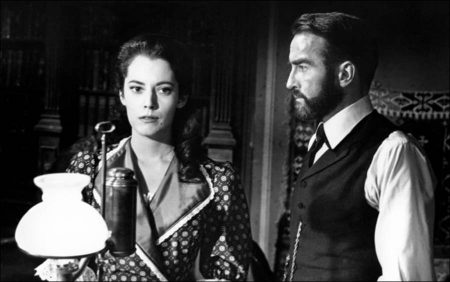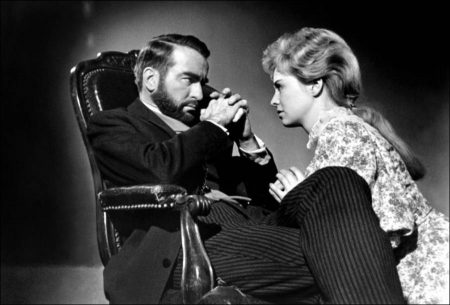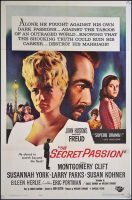Freud: The Secret Passion movie storyline. This pseudobiographical movie depicts five years from 1885 on in the life of the Viennese psychologist Sigmund Freud (1856-1939). At this time, most of his colleagues refuse to cure hysteric patients, because they believe they’re just simulating to gain attention. But Freud learns to use hypnosis to find out the reasons for the psychosis. His main patient is a young woman who refuses to drink water and is plagued repeatedly by the same nightmare.
Freud: The Secret Passion, also known as Freud, is a 1962 American biographical drama film based on the life of Austrian neurologist Sigmund Freud, directed by John Huston and produced by Wolfgang Reinhardt. It stars Montgomery Clift as Freud and Susannah York as his patient Cecily Koertner. Other cast members include Larry Parks, Susan Kohner, Eileen Herlie and Eric Portman.
The film was theatrically released in the United States by Universal-International on December 12, 1962 and was selected to compete for the Golden Bear in the competition section at the 13th Berlin International Film Festival. It was nominated for two Academy Awards and four Golden Globe Awards, including Best Motion Picture – Drama and Best Actress in a Motion Picture – Drama for York.
About the Production
In 1958, John Huston decided to make a film about the life of the young Sigmund Freud, and asked Jean-Paul Sartre to write a summary of a projected scenario. Sartre submitted a synopsis of 95 pages, which was accepted, but later completed a finished script that, if filmed, would have amounted to a running time of five hours, which Huston considered far too long.
Huston suggested cuts, but Sartre submitted an even longer script of eight hours, justifying the even longer version by saying, “On peut faire un film de quatre heures s’il s’agit de Ben Hur, mais le public de Texas ne supporterait pas quatre heures de complexes” (“We can make a film of four hours in the case of Ben Hur, but the Texas public couldn’t stand four hours of complexes.”). Huston and Sartre quarrelled, and Sartre withdrew his name from the film’s credits. Nevertheless, many key elements from Sartre’s script survive in the finished film, such as the creation of the composite patient Cecily, who combines features of Freud’s patients Anna O., Elisabeth von R., Dora, and others.
The film heavily compresses events, cases and acquaintances early in Freud’s career, spanning from his work at the Vienna General Hospital under Theodor Meynert during the mid-1880s, through his research into hysteria and his seduction theory along with Breuer, up until his development of infantile sexuality and the Oedipus complex around the turn of the century that became the basis for his fundamental Three Essays on the Theory of Sexuality, first published in 1905.
The character of Cecily Körtner is based upon a number of early patients of Freud’s, most heavily drawing on the Anna O. case but also Dora and others. Similarly, the character of Josef Breuer and his role as mentor and friend in Freud’s life as portrayed by Larry Parks is in fact a combination of the real Breuer with Wilhelm Fliess.
Freud: The Secret Passion (1962)
Directed by: John Huston
Starring: Montgomery Clift, Susannah York, Larry Parks, Susan Kohner, Eileen Herlie, Eric Portman, Rosalie Crutchley, David McCallum, David Kossoff, Joseph Fürst
Screenplay by: Charles Kaufman, Wolfgang Reinhardt, Jean-Paul Sartre
Production Design by: C.O. Erickson
Cinematography by: Douglas Slocombe
Film Editing by: Ralph Kemplen
Costume Design by: Doris Langley Moore
Art Direction by: Stephen B. Grimes
Music by: Jerry Goldsmith
MPAA Rating: None.
Distributed by: Universal-Pictures
Release Date: December 12, 1962
Views: 278



